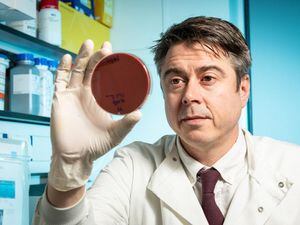Threat posed by common bacterium ‘should be taken more seriously’
Staphylococcus epidermidis, a close relative of MRSA, is present on the skin of every person on the planet.

The threat posed by the potentially deadly bacterium Staphylococcus epidermidis should be taken more seriously, researchers say.
A close relative of MRSA, the bacterium is a major cause of life-threatening infections after surgery, but researchers warn it is often overlooked by clinicians and scientists because it is so abundant.
A team from the Milner Centre for Evolution at the University of Bath identified a set of 61 genes that allow the normally harmless skin bacterium to cause potentially deadly illness.
It is hoped this discovery could help identify patients most at risk of infection before they undergo surgery.
Professor Sam Sheppard, director of bioinformatics at the Milner Centre for Evolution, said: “Staphlococcus epidermidis is a deadly pathogen in plain sight.
“It’s always been ignored clinically because it’s frequently been assumed that it was a contaminant in lab samples or it was simply accepted as a known risk of surgery.
“Post-surgical infections can be incredibly serious and can be fatal. Infection accounts for almost a third of deaths in the UK so I believe we should be doing more to reduce the risk if we possibly can.
“If we can identify who is most at risk of infection, we can target those patients with extra hygiene precautions before they undergo surgery.”
The researchers took samples from patients who suffered infections following hip or knee joint replacement and fracture fixation operations.
These were compared with samples from the skin of healthy volunteers.
There were 61 genes in the disease-causing bacteria that were not present in most of the healthy samples.
However, a small number of the healthy individuals were found to be carrying the more deadly form of the bacteria without being aware of it.
The disease-causing genes were found to help the bacterium grow in the bloodstream, avoid the host’s immune response, make the cell surface stick to allow an organism to form biofilms, and make the bug resistant to antibiotics.
Prof Sheppard added: “Because the bug is so abundant, they can evolve very fast by swapping genes with each other.
“If we do nothing to control this, there’s a risk that these disease-causing genes could spread more widely, meaning post-operative infections that are resistant to antibiotics could become even more common.”
The study was published in the journal Nature Communications.





